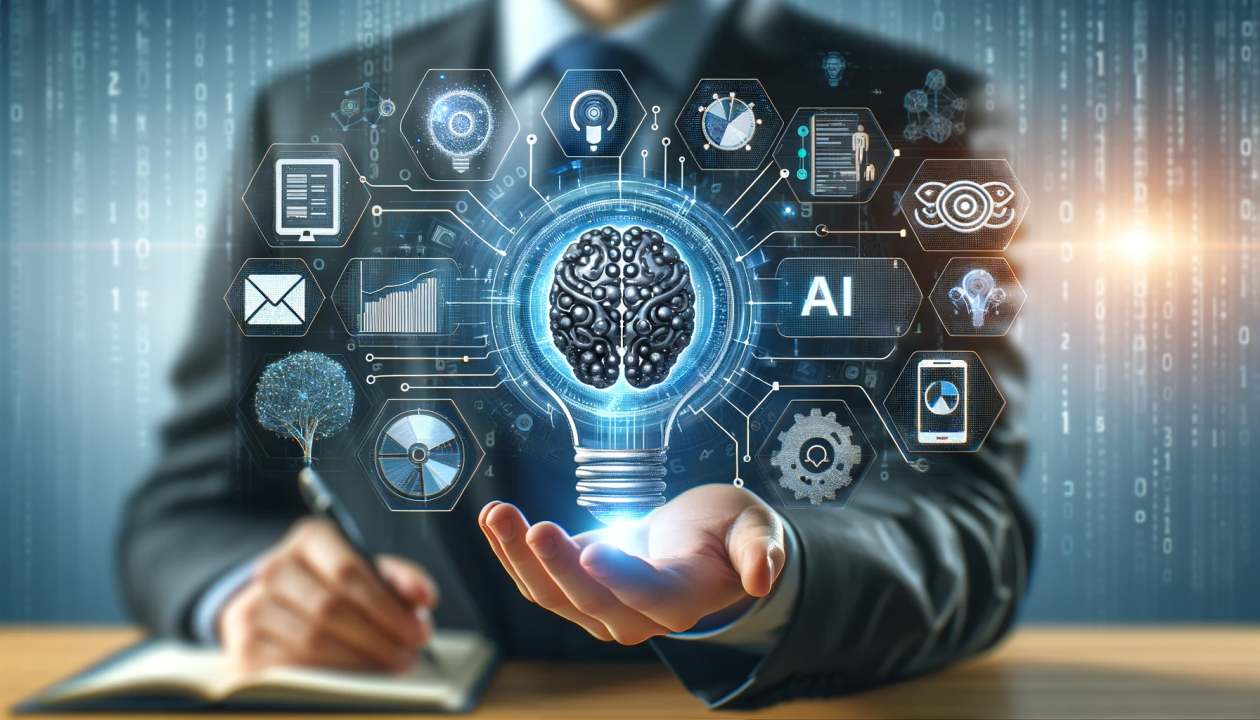In the current dynamic context of education, interactive and well-developed AI software development services are now reshaping teaching and learning processes at their best. With the capability of creating unique approaches to learning, real-time knowledge analysis, and new ideas within the field, AI in educational technology is opening more doors for development. This blog aims to capture the significance of using AI software development services to propel educational transformation. In this section, we explore how AI development services can enrich the methods. The AI market in education is expected to rise at a compound annual growth rate (CAGR) of 10% within the forecast period of 2023–2032 to be worth $30 billion.
AI-driven education: The Future of Learning
Just like any other sector, the education industry is experiencing the advent of AI by witnessing high turnover rates, shifting traditional paradigms of teaching, and considering how it will leverage technology in the future. Thus, through values such as high computation capability and the utilization of great amounts of data, the application of AI in educational technology can offer customized and adaptive learning processes. Educational advantages include real-time feedback, focused instruction, and flexible delivery modes such as virtual or augmented reality. As with other forms of intelligent aids, chatbots, and virtual tutors, conversational AI in education gives consistent help by motivating independent learning. Using AI for e-learning is a pioneer in changing the ways that students study through the integration of chatbots for learning purposes. These are intelligent chatbots that prompt the application of natural language processing and machine learning; they provide instant support to the students by answering the questions that they might have in the course of learning and maybe helping them understand concepts that they find a bit hard to grasp. Dynamic educational endeavors help in accommodating the learner’s revelation of ideas while enhancing the grasping of concepts to avoid forgetting when learning.
How AI software development services are pushing innovation into the education spectrum: An Overview
AI software development services are also relevant for this industry as they help bring innovations to education by implementing the smart technologies necessary to improve teaching, learning, and management. Here’s how these services are fostering innovation in education:
1. Personalized Learning Experiences: Machine learning algorithms help understand students’ preferences and interests and compare their progress and learning rates. Using such information, the educational platforms can provide the students with the intended learning materials that meet their specific needs, thus fostering learning and accomplishments. Artificial intelligence and machine learning can boost learners’ attendance by 47 percent, cut dropout rates by 32 percent, and enhance their academic achievements by 23 percent.
2. Adaptive Learning Platforms: Adaptive learning platforms are those that use AI in order to provide the student with the required information and skills, setting the pace of the training process and which materials are better to present to students according to the result of the acquired material. This makes sure the students get the corrective assistance and help at precisely the correct time, making them gain mastery over what they are learning.
3. AI-driven tutoring systems: computerized or guide-based tutorials assist individuals by being available at the click of a button to explain and guide them through problems a particular student might be facing. These systems can have predefined states corresponding to certain learning paces, act as a complementary learning tool, or be an LMS. According to research, ITS can significantly enhance student outcomes by delivering targeted guidance and support.
4. Automated Grading and Feedback: One of the key benefits of applying the use of AI is in grading assignments, quizzes, and tests, which can be done in a short amount of time and with less effort from the teachers as the system can grade all of the submissions in a matter of seconds and with a very high level of accuracy while still sparing the valuable time of the educators and allowing the students to receive the feedback they need immediately. This also speeds up the learning cycle, making it easier for the students to learn the strong and weak areas that they need to improve on.
5. Predictive Analytics for Student Success: AI systems explore data about students accumulated over a period of time that contains patterns and signs of their applicants’ success or possibility of failure. Education stakeholders stand to benefit from student forecasting since they unveil the rate of attendance and graduation disappointments, thereby allowing faculty members to adopt effective solutions on how to work on such disappointments.
6. Administrative Efficiency: AI software development services help educational institutions in the efficient and effective management of consumable and required resources like time and student bodies in various administrative channels. This has a positive effect on the overall learning process and enables educators to be more involved in teaching and learning.
7. Content Creation and Curation: Some AI-aided writing solutions create educational content, question-and-answer sessions, and tests according to curriculum interpretation and student choice. Furthermore, AI-based content aggregators provide educational material from various sources, like research papers, journals, peer-reviewed articles, and other learning materials that are relevant and of high quality for both educators and learners.
Conclusion
The utilization of AI software development services or AI in educational technology impacts education by enabling students to experience the plus side of receiving individual attention from instructors, allowing intelligent AI-driven tutoring systems that can be tailored to each individual student, utilizing predictive analytics in designing more compelling teaching and learning environments that are valuable, and creating efficient administration structures that help the education system. Thus, it can be noted that through effective use of the tools of artificial intelligence, educational institutions can increase the effectiveness of the processes of teaching and learning that are aimed at providing students with an opportunity to develop and succeed in a world that is constantly defined by ongoing changes.

